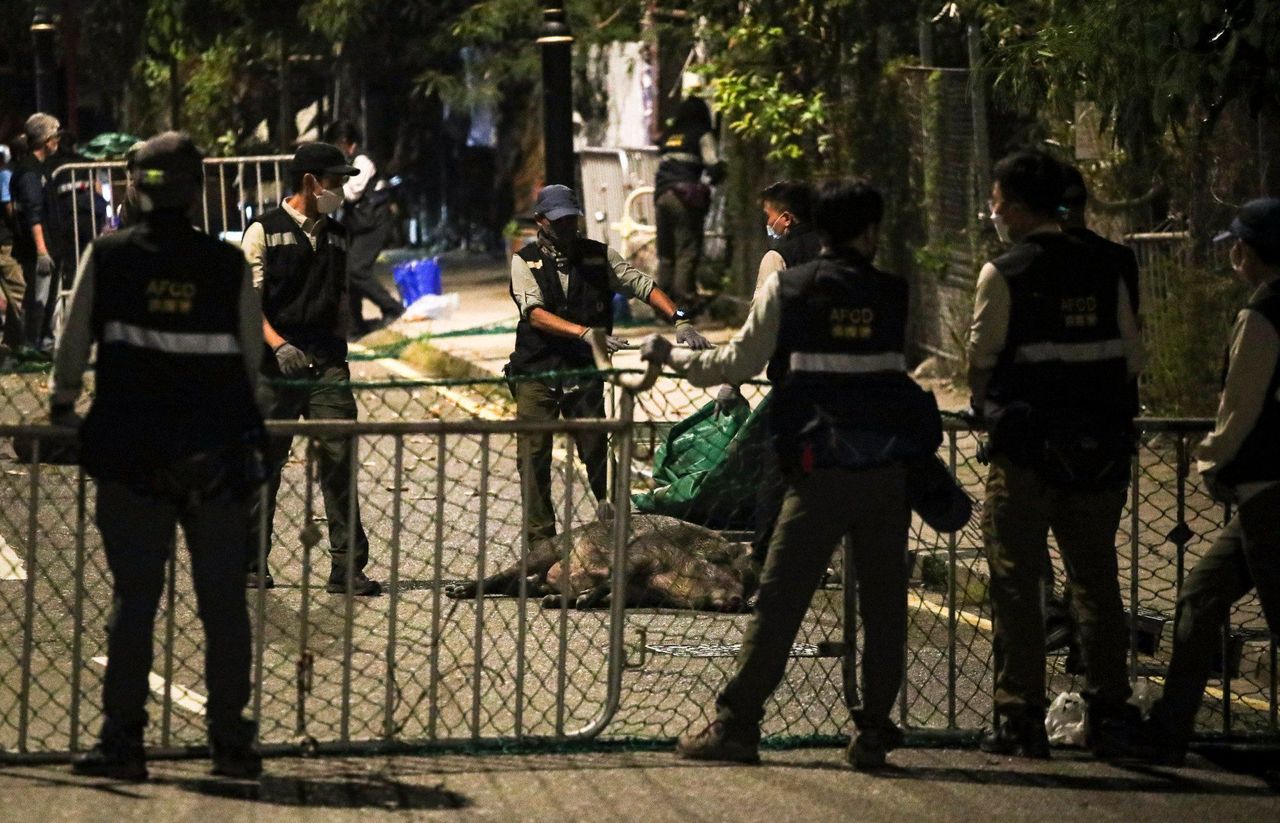Hong Kong News

28 wild boars put down in Hong Kong since start of urban area kill policy
Hong Kong authorities have put down 28 wild boars since November and will continue the practice of culling ones in urban areas with a view to protecting the public’s safety, according to the head of the city’s wildlife department.
Leung Siu-fai, director of the Agriculture, Fisheries and Conservation Department, on Sunday said 20 cases of wild boars injuring residents had been reported this year, mainly on Hong Kong Island.
“We will continue to catch some wild boars that are habitually haunting urban areas, are not afraid of people, and even pose a safety threat to the public,” he said.
 Wildlife officials changed their strategy over the wild boars in November.
Wildlife officials changed their strategy over the wild boars in November.
The department has mounted operations in five “black spots” and launched another seven after referrals from police. A total of 28 wild boars were captured and euthanised.
Asked if the department would continue with the strategy of culling the wild animals, Leung said more than 60 black spots in urban areas needed to be dealt with.
“For sure in some spots we can use other methods, such as improving the design of trash cans or through education and law enforcement, to reduce the number of people feeding wild boars,” Leung said. “As for other black spots, we will continue to adopt the strategy.”
In an operation on Kotewall Road in Central on Thursday, wildlife officials tranquillised the animals using dart guns and then put them down with an injection of drugs. Officials have also used food to lure boars into a capture area in other operations.
The department’s change of approach – announced in November – came after a surge of wild boar sightings in populated areas, causing a nuisance. The latest serious encounter came on November 10 when a wild boar knocked down a part-time police officer and bit him on the leg in Tin Hau.
The new strategy has triggered a widespread public outcry, especially from animal welfare groups, which have urged the administration to abandon the policy.
The department previously said that as the nuisance was largely caused by intentional feeding activities, it was exploring amendments to the Wild Animals Protection Ordinance to minimise the pull factor drawing the species to urban areas.











